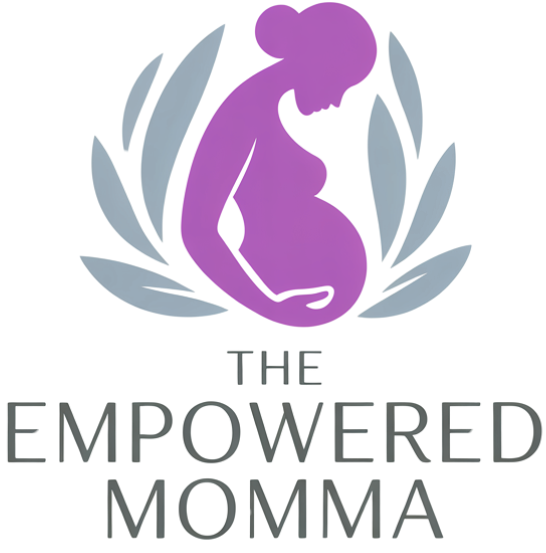Many pregnant women wonder if lifting weights or doing strength training is safe while they’re expecting. For most healthy pregnancies, the answer is yes! Staying active, including doing strength exercises, is usually safe and can be very good for both mother and baby. However, every pregnancy is different-so you will need to make some changes and watch out for specific risks. This guide explains what strength training during pregnancy looks like, its benefits, safety tips, and which moves to avoid, so you can keep working out safely and confidently.
What Does Strength Training Mean in Pregnancy?
Strength training means doing exercises to make your muscles stronger. This could be using things like dumbbells, resistance bands, or just your own body weight. The main idea is to give your muscles a challenge so they become stronger and more able to support you. These kinds of exercises remain useful, even as your body changes throughout pregnancy.
Is Strength Training Safe During Pregnancy?
Yes, it usually is. The old idea that pregnant women should avoid all types of strength or heavy lifting isn’t backed by new research. Groups like the American College of Obstetricians and Gynecologists (ACOG) say that most women with normal pregnancies, and no health problems, can keep up with-or even start-strength training if they do it safely. Working out during pregnancy isn’t linked to a higher risk of miscarriage, low birth weight, or early birth. But, you should always check with your healthcare provider before you start any new exercise program, especially if you have health problems or a high-risk pregnancy.
How Does Pregnancy Change the Way You Lift Weights?
Pregnancy brings changes that affect your workouts. One big factor is the hormone relaxin, which makes your joints and ligaments looser to help you prepare for delivery. This can make you more likely to get injured. Your growing belly also changes your balance, making falls more likely. You’ll also find yourself getting out of breath more easily, because your body is using more oxygen. So, you’ll probably need to do exercises with lighter weights, slower movements, and pay close attention to your technique and how your body feels.

Benefits of Strength Training While Pregnant
Strength exercises during pregnancy aren’t just safe-they also give you many important benefits that help you feel better, both physically and mentally, and get ready for childbirth and new motherhood.
- Better posture and less back pain:
As your belly grows, your lower back and shoulders often feel strained. Up to 76% of pregnant women feel some back pain. Exercises that focus on your back, core, and chest can improve your alignment and help with aches. Strengthening your core muscles, in particular, is great for easing lower back pain. - Healthy weight gain:
Some weight gain is normal and needed in pregnancy. But gaining too much can cause problems. Regular exercise, including strength training, helps you manage weight gain in a healthy range, which is good for both you and your baby. - Keeping up muscle and stamina:
Pregnancy, labor, and childcare are physically demanding! Keeping your muscles strong makes daily tasks easier, helps prepare you for giving birth, and can make recovery after the baby is born smoother. You’ll also need strong arms and shoulders for carrying your baby. - Lower risk of gestational diabetes:
Exercising while pregnant can cut your chance of getting gestational diabetes. If you do get it, strength training may help control blood sugar and even reduce how much insulin you need. - Getting ready for labor and life after birth:
Strength training prepares your body for labor-it can even shorten the tough part of labor and reduce your chances of needing a C-section. After birth, being stronger means your body is better set up to handle taking care of your newborn and can help with healing.

Which Types of Strength Training Are Okay?
Most types of strength exercises are fine during pregnancy, if you do them the right way and adjust as needed. The main thing is to pick exercises that feel right and are comfortable for your changing body.
| Type | Examples | Tips |
|---|---|---|
| Bodyweight Exercises | Squats, lunges, push-ups (wall or incline), planks (modified) | No gear needed; easy to adjust for your body; helps build practical strength |
| Free Weights & Resistance Bands | Dumbbell rows, bicep curls, shoulder presses with lighter weights; banded squats | Use lighter weights with more reps; avoid straining; bands offer gentle resistance and are easy to adapt |
| Weight Machines | Seated row, chest press, leg press | Stable and controlled. Adjust machines for your comfort. Avoid any that require you to lie flat after the first trimester. |
When strength training, it’s smart to focus on your back, core (especially the deep abdominal and pelvic floor muscles), legs, and arms. These groups are all put under more pressure during pregnancy and will be important for both labor and baby care later on.

Safety Tips for Strength Training While Pregnant
Exercising safely matters more than how much you can lift. Follow these basic safety tips every time you work out:
- Always listen to your body. If anything feels wrong or you get very tired, stop.
- Don’t overdo it. You should be able to talk while exercising-if you can’t, slow down.
- Drink plenty of water and avoid working out in very hot or humid conditions.
- Wear loose clothing and a good, supportive sports bra.
- Warm up and cool down before and after every session.
- If you weren’t active before pregnancy, start slow-maybe 5 minutes per day at first and build from there.
How Heavy is Too Heavy?
There is no set maximum weight for everyone. What matters most is how you feel. Use lighter weights with more repetitions (like 10-15 per set) and keep the moves controlled. If you notice yourself straining or having trouble with form, lower the weight. Never sacrifice good posture just to lift heavier.
How Often Should You Train?
Health guidelines recommend at least 150 minutes of moderate activity weekly, including at least two days each week of strength training. Try to mix exercises for all main body areas each session instead of focusing on just one (like “leg day”). Usually, two or three full-body sessions per week are enough.
Breathing and Using Good Form
Never hold your breath while you lift; breathing out during effort (like the push of a squat) and in during the easier part protect your back and make sure your baby keeps getting enough oxygen. Keep your back straight, bend at the knees, and keep your tummy muscles tight-but don’t hold your breath. If you’re not sure about your form, a certified prenatal trainer can help.

Warning Signs to Stop Exercise
Stop immediately and contact your doctor if you have:
- Vaginal bleeding or fluid loss
- Dizziness or fainting
- Chest pain or shortness of breath before exercise
- Severe headache
- Muscle weakness or calf pain/swelling
- Sudden pain in your belly or pelvis
- Less movement from your baby
By Trimester: Changing Your Routine
Your strength training should shift a little as you move through each stage of pregnancy:
- First Trimester: Most people can keep doing their normal routine, as long as they feel good. This is a good time to form exercise habits and focus on learning proper form. If you’re new to strength training, start slow.
- Second Trimester: When your belly grows, adjust moves as needed. Avoid anything that has you lying flat on your back for a long time (this can cut off blood flow). Change to incline or upright positions instead. Avoid leaning forward a lot and keep movements slow and safe.
- Third Trimester: Focus on comfort and safety. Your balance will change, and you might feel more tired. Stick with lighter weights or bodyweight moves. Avoid exercises that feel risky, cause pain, or put stress on your belly. Gentle exercise like yoga, swimming, or walking are also great choices now.

Which Strength Training Exercises Should You Avoid?
Some moves are not safe during pregnancy. Avoid these to keep yourself and your baby safe:
- Anything that increases your chance of falling: Examples: skiing, water skiing, horseback riding, cycling outdoors, gymnastics, surfing. These are risky because your balance is less steady now.
- Exercises that make you lie flat on your back (after 12 weeks): This can lower blood flow for you and your baby. Use incline or upright positions.
- Heavy overhead lifts, or lifting extremely heavy weights: These moves are tough on your back and can make you hold your breath, which isn’t safe. Stick to lighter weights and more reps.
- These specific exercises should be skipped:
- Weighted sit-ups or crunches after 12 weeks (can cause abdominal separation)
- Ab machines that twist your waist
- Heavy barbells held behind your neck
- Big barbell moves like deadlifts, clean and press, upright rows (especially later in pregnancy)
- Bending at the waist after the first trimester
- Contact sports (kickboxing, judo, basketball, soccer)
If an exercise gives you pain, feels off-balance, or is uncomfortable, skip it and try something else. A prenatal fitness expert can offer good alternatives.
More Tips and Common Questions
Why Should You Check With Your Doctor?
Your doctor can tell you if there are any conditions you have that need extra care or limit exercise. If you have placenta previa, heart disease, are carrying multiples, or had prior complications, you may need a different routine. Always get your doctor’s okay first.
Can You Keep Lifting if You Did Before?
If you were already lifting before pregnancy, you can usually keep going-with changes as you go. Scale back weights, watch your form, and adjust the moves as your belly grows. Always keep your trainers and doctor in the loop about your pregnancy.
Is CrossFit or HIIT Safe?
If you have a lot of experience with CrossFit or high-intensity interval training (HIIT), and your pregnancy is healthy, you might be able to keep going with big changes and doctor approval. But, these workouts are usually intense, with heavy weights and jumping-so most pregnant people are told to avoid them or work with a prenatal coach to scale them down.
When Should You Stop Strength Training in Pregnancy?
Stop (and call your doctor) if you notice bleeding, fluid loss, chest pain, trouble breathing, or strong pain. Other reasons to stop are just feeling too tired or uncomfortable, or your doctor suggests it. Many women slow down or switch to gentler movements near their due date. Listen to your body-it knows best.
Wrap-Up: What’s Okay in Pregnancy Strength Training?
Strength training when you’re pregnant is a great way to help your body through pregnancy, labor, and life with a newborn. It helps with pain, improves mood, and keeps you ready for the big changes ahead. Every move you make is helping you get stronger for your baby and yourself. Always listen to how you feel, talk with your doctor, and take pride in the ability of your changing body.

